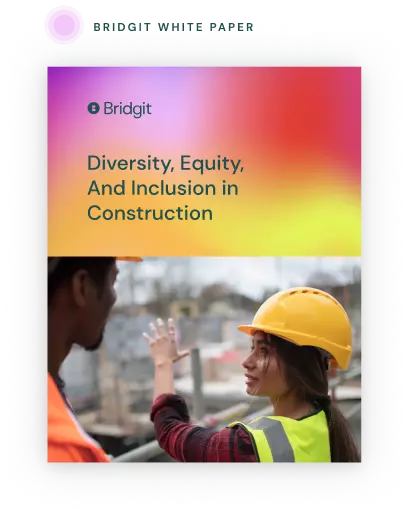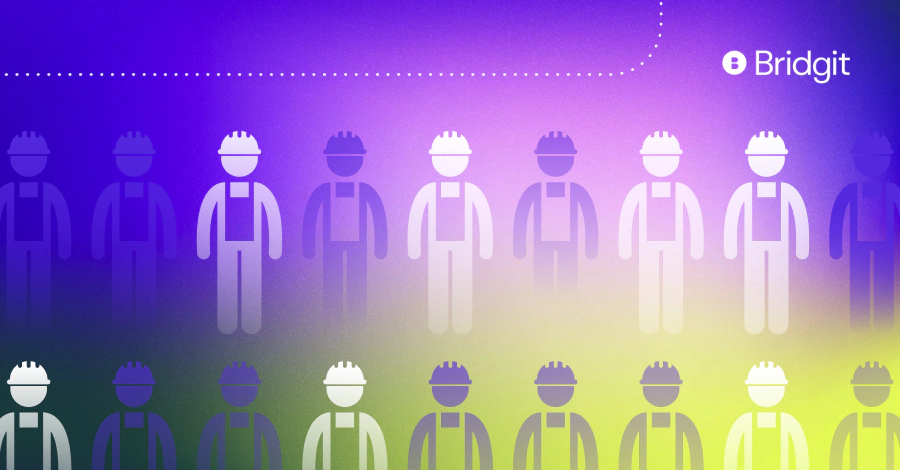Construction has a labor problem. While this has historically been an issue for construction, the recent COVID-19 pandemic has taken its toll on the industry and is forcing general contractors to re-evaluate skilled labor and the value of internal development.
Table of Contents
Recruiting and retaining dependable, skilled labor is one of the biggest challenges for general contractors across North America. Addressing the shortage of skilled labor isn’t an overnight fix, but there are a number of steps your organization can take to combat this challenge.
In this article, we will explore the reasons for the skilled labor shortage in construction, the impact that the COVID-19 pandemic has had on this challenge, and a few different strategies that general contractors can use to manage their skilled labor shortage and improve their workforce retention rates.
Why is there a labor shortage to begin with?
Construction is an industry that shows growth yearly as the population grows and the demand for more buildings increases. According to Statista, private construction spending alone is expected to increase by $500 billion from 2018-2022. With such a high demand for projects and an industry showing continual growth, it’s hard to believe there aren’t more skilled workers chomping at the bit to be a part of this industry.
So why is there such a shortage of skilled labor available for hire?
It’s hard to pin down the cause of the construction labor shortage to a single reason or event. In fact, several contributing factors have influenced the current state of labor in the construction industry:

Addressing diversity, equity, and inclusion in construction with empathy
Download our white paper to see the industry’s challenges in attracting and retaining talent from historically underrepresented populations.
BABY BOOMERS ARE A MAJORITY OF THE WORKFORCE, AND THEY’RE RETIRING
According to the National Center for Construction Education & Research, roughly 41% of the current workforce will retire in the next ten years on top of those that already have. That includes many team members in management positions and with in-demand skills.
MILLENNIALS DON’T VIEW CONSTRUCTION AS A WORKPLACE
According to Inc., nearly half of the current North American workforce is made up of millennials. By 2025, they forecast millennials will make up roughly 75%. Why is that a problem? Millennials don’t look at construction as a rewarding industry. In a 2019 report by the U.S. Chamber of Commerce, 61% of contractors indicated that construction jobs were considered “dirty jobs”.
THE RECESSION’S AFTEREFFECTS ARE STILL IN PLACE TODAY
While this may seem like old news, the impact of the 2008 recession is still being felt today. According to the New York Times, 630,000 construction workers left the industry in 2008 to find new work and never returned. The construction unemployment rate also soared to 15.3%, head and shoulders above any other industry.
The labor shortage is undoubtedly taking its toll on the construction industry. According to the 2020 Q3 Commercial Construction Index, 73% of contractors are being forced to ask their skilled workers to take on more work, risking both burnout and quality of work.
How has COVID-19 impacted construction labor?
Even though construction has been deemed an essential service, the pandemic has significantly impacted the industry. A recent survey done by AGC and Autodesk revealed that 60% of companies reported having to postpone or cancel a scheduled project, a major increase from the 32% reported in June.
So, how does that affect labor?
Though construction is underway again, and construction employment growth has increased (construction unemployment rose to 7.6%, up from 8.9% in July), the construction workforce is still down by 294,000 compared to the previous year. The numbers tell a story of two different market sectors, though.
Homebuilding and non-residential niches are thriving and have added just under 35,000 jobs in the last month, while heavy and civil engineering and specialty trade contractors are down over 21,000. According to Anirban Basu, Chief Economist for the Associated Builders and Contractors, the decrease in non-residential construction jobs results from tighter financing conditions, lingering uncertainties, and project postponements and cancellations.
Despite the increase in available workers, 83% of contractors continue to report difficulty finding skilled workers to employ. How can that be? Well, the competitive nature of construction recruitment has also increased, according to the 2020 Q3 Commercial Construction Index, with 32% of contractors looking to employ more people over the next six months. On top of that, the current uncertainty facing the construction industry has led to many workers hesitating to rejoin the workforce and seeking alternative employment.
What can general contractors do about the labor shortage?
1. Invest in proper resource management
Getting the most out of your workforce requires a deeper understanding of how your resources are allocated. Similar to construction projects, this requires the right tool for the job. Resource management and workforce planning tools like Bridgit Bench are helping to reshape the way contractors monitor and allocate their workforce.
Tools like Bridgit Bench help to streamline core operations and provide valuable insight into workforce utilization rates. They also help to identify trends that allow you to stay ahead and make informed decisions around your recruitment process. The more time you have to find and recruit skilled workers, the more likely you will hire the best fit for your company. Being a technology and data-driven organization also appeals to the millennial generation. Read our ultimate guide to HR in construction to learn more.
With the millennials and even the newest generation coming into the workforce, they’ve grown up with technology, they expect it. It’s become so integral to our everyday lives and the way that we execute our own processes that it’s expected we use technology.
Robert Kipp, Tishman Construction
Read this guide to learn more about automated construction resource management.
2. Improve your company culture
With construction being an unappealing industry for younger generations, general contractors need to improve their company culture and, in doing so, improve the industry’s culture in general. A great company culture not only helps to retain skilled workers but also helps to increase engagement from your new employees. A few ways to start improving your company culture today include:
- Asking for more feedback from your workforce allows your team to voice any concerns they may have and helps identify improvement areas. Asking for feedback also shows your team they value your input and expertise.
- Reward team members who engage in your company values – This helps set the standard for the rest of your team while reinforcing your company values.
3. Identify new talent pools you can tap into
Look to different sectors
A drop in employment for infrastructure and non-residential construction companies means there is a bounty of skilled workers to target when recruiting. Offering opportunities for gainful employment and career development can help to pull workers who had to be let go due to construction slowing down. With plenty of transferable skills and a preexisting desire to work with their hands, recruiting from other construction sectors can help lessen the impact COVID-19 has had on construction unemployment rates.
The female workforce
According to the Bureau of Labor Statistics, women make up only 10.3% of the construction workforce, and only 1% of workers on a building site are female. With a daunting labor shortage, this is a massive talent pool that the construction industry should focus its attention on.
Break down language barriers
The Bureau of Labor Statistics has also indicated that construction has the greatest foreign-language gap, with over 30% of the workforce being Hispanic or Latino and 40% of companies reporting such a gap existing in their organization. Not being able to communicate effectively makes construction less efficient. Employers should try to overcome this barrier by offering language training and even including language proficiency a requirement during the hiring process. This helps to create an inclusive culture that is more appealing to non-English speaking workers and greatly expands your available talent pool.
Get creative
Construction requires a workforce that is comfortable working with their hands and working outside. Construction workers are often considered “occupational athletes” (people who physically move around to work and earn a living). Why not try recruiting actual athletes? Thousands of physically gifted young athletes have given up on their dream of making “the show” and entering the workforce every year.
Tapping into what makes construction an appealing job helps identify new talent pools with similar values.
While COVID-19 has certainly impacted construction labor, it’s also a great opportunity to reevaluate what has and has not worked for your company. Construction is a resilient industry and will undoubtedly bounce back from the challenges brought on by the pandemic.


